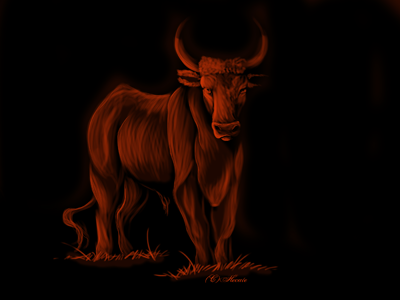Polytheism
Educational
Polytheism is the belief or worship in multiple deities usually assembled into a pantheon of gods and goddesses, along with their own religions and rituals. Polytheist.
Aatxe is a spirit in the folk mythology of the Basque people. His name is literally translated as "Young Bull", and he is sometimes known as Etsai. He is a cave-dwelling spirit who adopts the form of a young red bull, but being a shapeshifter, sometimes takes the shape of a man. At night, more so in stormy weather, he arises from the hollow which is his lair. He attacks criminals and other malevolent people. He also protects people by making them stay home when danger is near.
He is theorized to be a representative of the goddess Mari, or may be an enforcer of her will, punishing people who cheat her. Another name for him is Aatxegorri which means "young red bull". It is believed Aatxe inhabited caves and hollows; in many (Isturits, Sare, Errenteria, among others) engravings and paintings depicting aurochs, bulls, and oxen have been found; which implies that this Basque myth has its origins in the Paleolithic.







This is a nice rare find from the people of the Basque who are really less known
This lore here will even help me personally to think about their myth units and such
Good find
P.S. : Grrr ! This makes me rage that the Spanish of later times began practicing corrida with bulls that did not stop in our days , whilst bulls were spirits of good once
Is a sacrilege for the Basque from the Spanish and i sure wish they would stop it
Hunting for food is always okay but hunting for sport , especially fun is always wrong
I have the same tought
Let's make them pay for this then